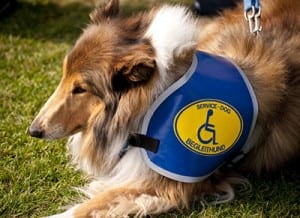Dogs perform many important functions in society, and there are many different kinds of working dogs. Assistance dogs enhances people’s lives through helping with tasks their person would have trouble completing on their own.
 Assistance dogs are divided into three categories:
Assistance dogs are divided into three categories:
Guide dogs help the blind and visually impaired. These dogs help humans through guiding their handler past obstacles, stopping at stabs and curbs, and negotiating traffic. The handler gives commands, but it is the dog’s responsibility to ensure the team’s safety.
This type of job can be difficult and requires a lot from the dog, because doing the job to keep the handler safe can require disobeying direct commands.
Hearing dogs help the deaf and heard of hearing. They assist through alerting their handlers to sound, and are trained to make physical contact with their handler, leading them to the source of the sound. These dogs are commonly trained to react to doorbells, alarm clocks, telephones, crying babies, and similar.
Service dogs help people with other types of disabilities. Some are trained to work with wheelchairs, some are medical alert dogs, others help children with autism. There is a wide range of task performed by service dogs and they are often trained to open and close doors, turn on lights, bring objects, provide balance, and many other things.
Assistance groups are recognized by the ADA. Their handler have the right to bring them to any place that is open to the public



